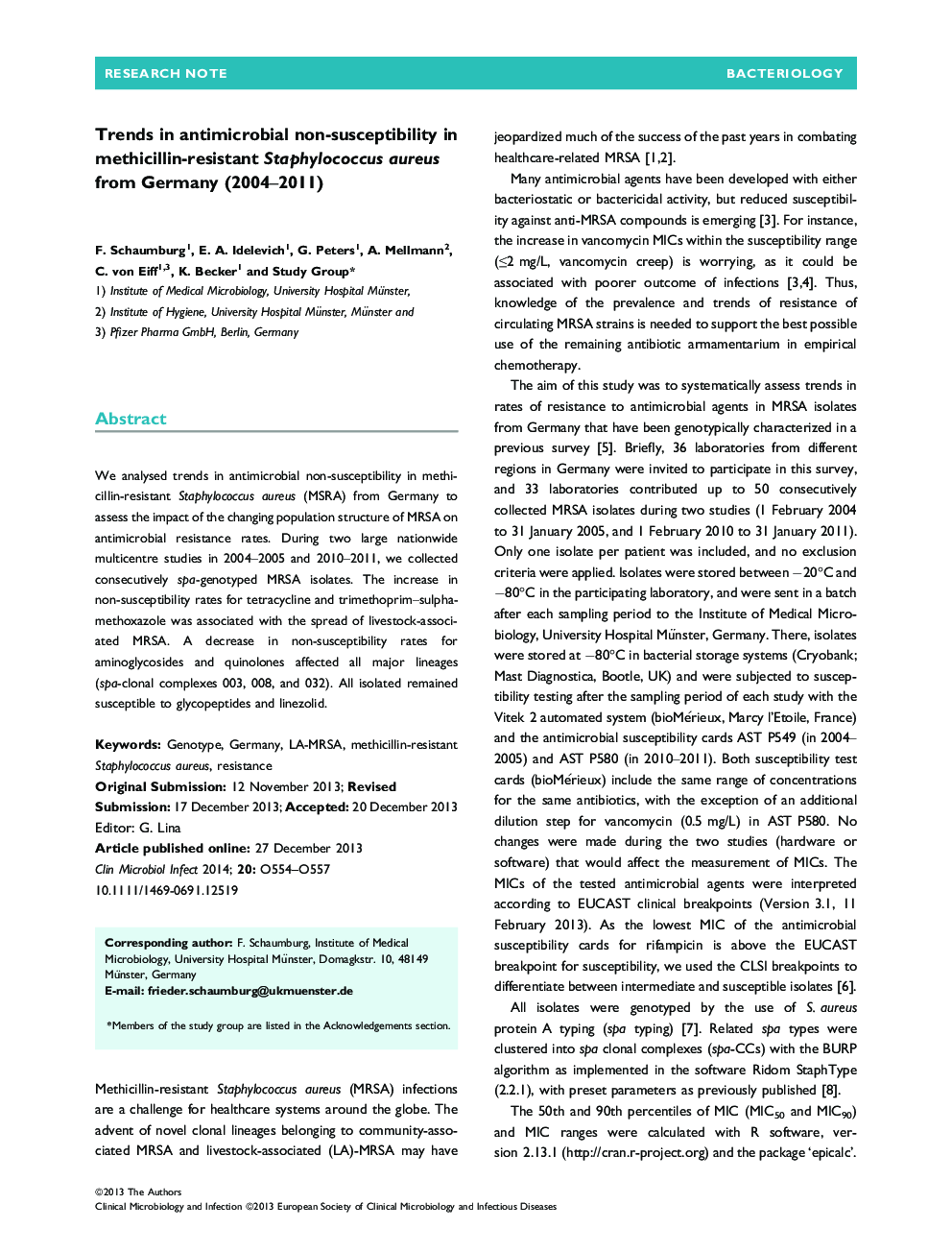| Article ID | Journal | Published Year | Pages | File Type |
|---|---|---|---|---|
| 6130328 | Clinical Microbiology and Infection | 2014 | 4 Pages |
Abstract
We analysed trends in antimicrobial non-susceptibility in methicillin-resistant Staphylococcus aureus (MSRA) from Germany to assess the impact of the changing population structure of MRSA on antimicrobial resistance rates. During two large nationwide multicentre studies in 2004-2005 and 2010-2011, we collected consecutively spa-genotyped MRSA isolates. The increase in non-susceptibility rates for tetracycline and trimethoprim-sulphamethoxazole was associated with the spread of livestock-associated MRSA. A decrease in non-susceptibility rates for aminoglycosides and quinolones affected all major lineages (spa-clonal complexes 003, 008, and 032). All isolated remained susceptible to glycopeptides and linezolid.
Related Topics
Life Sciences
Immunology and Microbiology
Microbiology
Authors
F. Schaumburg, E.A. Idelevich, G. Peters, A. Mellmann, C. von Eiff, K. Becker, Study Group Study Group,
